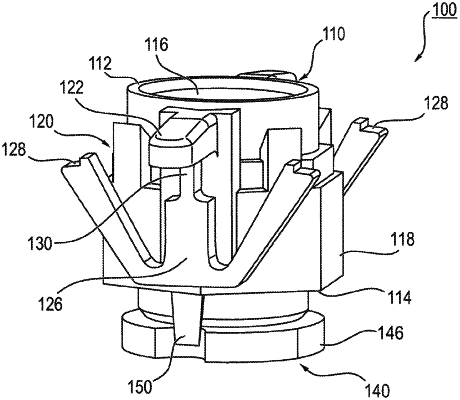| CPC E04D 5/145 (2013.01) [E04B 1/40 (2013.01); E04D 5/146 (2013.01); F16B 5/0225 (2013.01); F16B 5/0233 (2013.01)] | 18 Claims |

|
1. A fastening arrangement for fastening a first component to a second component with an automatic compensation of tolerances in the distance between the first component and the second component, comprising the following features:
a. a base element with a first and a second axial end as well as a holding structure at a radial outer side for holding the base element in an opening of the first component, and
b. an adjusting unit which can be screwed into the base element with a dragging unit inserted therein, while
c. a fastening screw can be connected with the adjusting unit via the dragging unit by means of a releasable dragging connection, so that when rotating the fastening screw, the adjusting unit can be rotated conjointly and can be moved in abutment with the second component, wherein
d. the holding structure of the base element comprises two attachment arms adjacent to the first axial end, so that the attachment arms can be brought in abutment with a first side of the first component adjacent to the opening of the first component, with
e. the holding structure of the base element comprising two holding segments, which provide an attachment surface axially spaced from the first axial end of the base element, so that the attachment surface can be brought in abutment with a second side of the first component adjacent to the opening of the first component, and which, referred to a plane perpendicular to the longitudinal axis of the base element are pivotable about an axis of the plane, so that
by means of the holding segment, an angle between the first and the second component can be compensated such that when the adjusting unit abuts on the second component, a longitudinal axis of the fastening arrangement runs perpendicular to a plane of the second component.
|